
Overview
Client: Adventure tour service
Business structure: SME
Lifecycle stage: Launch
Goal: Rapid growth
Solution: Ecommerce site
Technology: Shopify, Tidio, Outgrow, and Book That App.
The aim of this project is to set up an interactive ecommerce store for a new adventure travel service based in Sydney that will initially provide five tour activities, each held in five cities within five countries (25 total cities or tours), and wants to optimise consumer insights and behaviour to tailor services, boost retention, and strategically scale tours. They aim to provide an adventure travel service that delivers a simplified, streamlined, personalised booking process that builds strong relationships with their customers, and develop loyalty over time through increasingly customised and scaled tour programs, while always maintaining the same enjoyable, easy experience of information-seeking, decision-making, and action-taking.
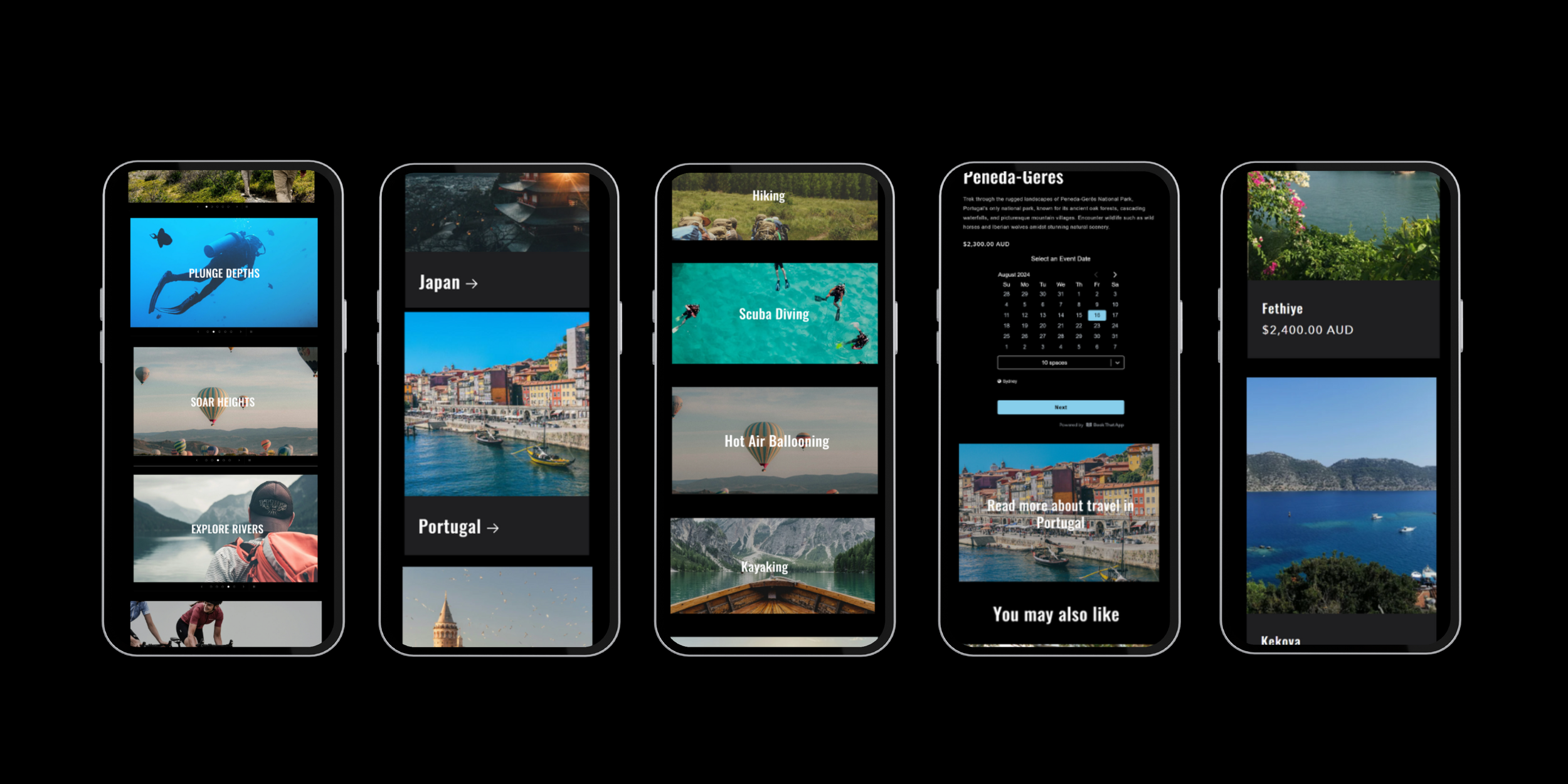
Analysis
73% of consumers feel inundated by choice
Source: Accenture, 2024.
Strategy
“Our research confirms the majority of travellers (75%) wish that they could make the right travel decision more quickly, easily, and confidently - highlighting the urgent need for an intelligent way to navigate the travel landscape.” - Emily Weiss, Accenture Travel, 2024.
Three articles published by Accenture in 2024 (see References below) highlight not only how fast the global travel industry is moving to bring the value of generative AI to holidaymakers, but also that consumer expectations are changing at an even more rapid pace, speeding ahead of industry’s ability to keep up. Emily Weiss, Accenture Travel Senior Managing Director, suggests that key to capturing the full potential of genAI is a strong data infrastructure and human-centred strategy: “Being data-powered and delightfully human” (Weiss, 2024). These insights helped me take the client’s perspective and start to ideate on the design with their goals clearly in mind.
Competitors
In this light, and always in the mood to escape, a review of major adventure travel websites was undertaken, focusing on the local context. Not having visited an adventure travel website before, and being aware of today’s graphics and video technology, I had visions of being taken away into expansive scenic views, videos of rushing rapids, and powerful use of light and colour to capture the imagination. So, I was surprised to find instead the very experience bemoaned by consumers in the Accenture survey results reported above - inundated with information, my eyes having to navigate web pages crowded with small containers of details that my mind struggled to sort through for what was relevant to me. Instead of finding a window to another world, I found myself facing the very thing I would be trying to escape through a holiday - mental work and cognitive overload. As a result, I added to the requirements of data infrastructure and people-focus, the need to inspire wonder.
Technology
With the opportunity to start from a blank slate in terms of technology, the client is wanting to make use of the best available off-the-shelf products, and to adopt a long-term AI strategy, while managing the risks of moving too quickly or slowly in this area. The client believes the approach with the most promising results in their circumstances is to use and learn from existing AI-enabled products that are innovating at a fast rate themselves, such as Shopify, while setting up robust data monitoring and management systems, and to regularly review and improve their operations into the future in light of advancements in technology and their own capabilities. The client is also interested in implementing other emerging technology as suitable at a later time, such as extended reality, as discussed by Accenture (Gupta, 2024). Virtual, augmented, and mixed reality, along with other spatial computing technologies, may hold yet untapped potential in travel.
User Research
User Personas
“As a first-time adventure traveller, I want to interact with a chatbot on the website so that I can quickly explore beginner-level, guided adventure tours suitable for an avid cyclist with no prior adventure travel experience.”
“As a previous adventure traveller with a busy career, I want to take a quiz on the website that helps me to find the perfect tour by matching my preferences for a high-quality, memorable experience, as I very rarely take holidays or travel.”
“As an experienced adventure traveller looking for something new and different, I want to see customised recommendations on the website that suggest unique and exciting activities or destinations that I haven’t tried or thought of.”
Customer Journey Map: Tony
Roadmap
The focus in this project was organising the information architecture across details of the 25 tours titled by city and activity, the five countries, and the five activities, and then making sure that the majority of pages across the site logically and naturally linked back to one of these categories. An additional category of information was created in the traveller level of experience, which was included on only the Tours page, accessible through the top menu link and the ‘Be Challenged’ CTA at the top of the home page. The information architecture formed the basis of the most important features of the site, including the tour booking system, quiz, chatbot, and recommendations. Organising and categorising the tour details was considered key to making sure that users would be able to find information easily for decision-making and booking.
Solution Design
Information Architecture
Wireflow
The wireflow diagram illustrates the use case of a first-time adventurer, such as Tony. The user starts by asking the chatbot a question, and the chatbot provides a brief helpful answer, referring the user to more details available in the FAQs page, providing a link to it.
The user clicks the link to read the relevant FAQ, which provides a comprehensive answer. The answer also suggests the user to go to a relevant article in News & Tips to find out more information, if they are interested. The user clicks the link to the article to read it.
At this point the user has had their key enquiry satisfied, and is now ready to look for a tour. They see at the bottom of the article a link to a quiz that will help them do this, and click into the quiz to start it.
At the end of the quiz, the user sees two or three recommended tours, and they follow one of the links to its page to find out more, viewing the dates that this tour is available over the next calendar year.
Branding & Visual Design
Interactive Features
Booking System
After assessing the scheduling app options available on the Shopify App Store, Book That App was chosen because it is free, it is flexible in how it can be used across different industry settings, it has many helpful resources on its website, it has many reviews and is highly rated, and it is also very customisable to the design of a website, as can be seen in the image to the right, where it is placed on a page which has an all-black background with white text and accent colour of bright blue.
The app provides for full control over entry of the relevant events and availabilities on, for example, a 12-month basis, with bulk editing actions, as well as provision for how many places are still available for the event, and this can be linked to the sales system of the relevant Shopify store for automatic updating. Both the functioning and the aesthetics of the app are relatively easy and enjoyable for users to operate.
Chatbot
Tidio was selected for the live chatbot feature due to its ease of setup and maintenance, helpful information available, adequate customisation, and affordability, with a free one-month trial for new users.
A set of 10 questions and answers were created based on the three main user personas for initial testing, and these were refined and expanded to a total of 25 questions based on consumer research.
The client has the option at a later time to set up the AI Chatbot Lyra using the FAQs for training, which can also be further developed and refined for dealing with a larger range of enquiries effectively.
Chatbot User Flow: Tony finds his first Adventure Tour with help from the chatbot
Quiz
Outgrow was used for the quiz, as it offers a wide variety of interactive web features and tools, it is easy to integrate with Shopify, provides helpful user information, and is within the client’s budget.
A set of seven questions was created based on factors that may be considered by prospective adventure travellers, and the products mapped to each answer to form the recommendations upon its completion.
The quiz was then tested in each use case identified in the initial user research, and the questions improved in their wording, sequence, the answer options, and the recommendations given for each answer set.
Quiz User Flow: Gabriela finds an Adventure to last a lifetime using the quiz
Recommendations
Shopify enables recommendations to be set up manually, or automatically on certain themes to make it easier for users to discover and buy new products.
Two types of recommendations are available: related and complementary. Related recommendations are for products placed under a heading, “You may also like”, on a page. Complementary products are placed under the heading, “Pair it with”.
With an inventory of only twenty-five tours to start with, the adventure tour service decided to set up these recommendations with its free template for later evaluation.
Recommendations User Flow: Ivan discovers his new Adventure via recommendations
Key Landing Pages
Summary
CHALLENGE
Client need to establish online presence for new business with means to meet consumer expectations for simplified and streamlined tour booking and customise services over time.
SOLUTION
An ecommerce website with scalability, flexibility, and interactive tools for customers to engage with the business and so the business can learn more about its target market and their needs.
LESSONS
In a future project with similar requirements I would spend more time planning the data and information structure, and how this relates to navigation for different use cases, which could have been better.
REFERENCES
*Synthetic content used in ecommerce store articles and FAQs for demonstration purposes

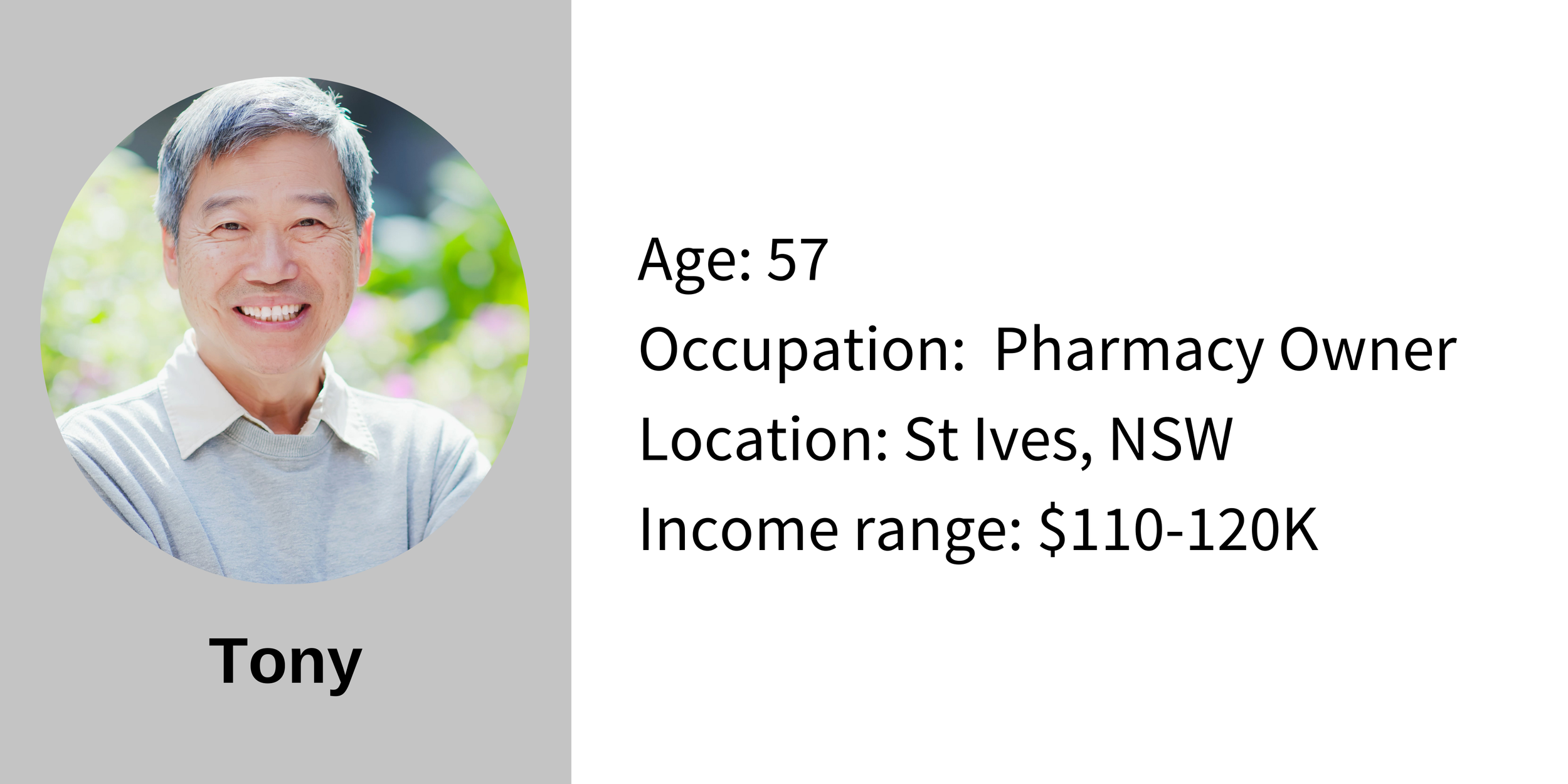

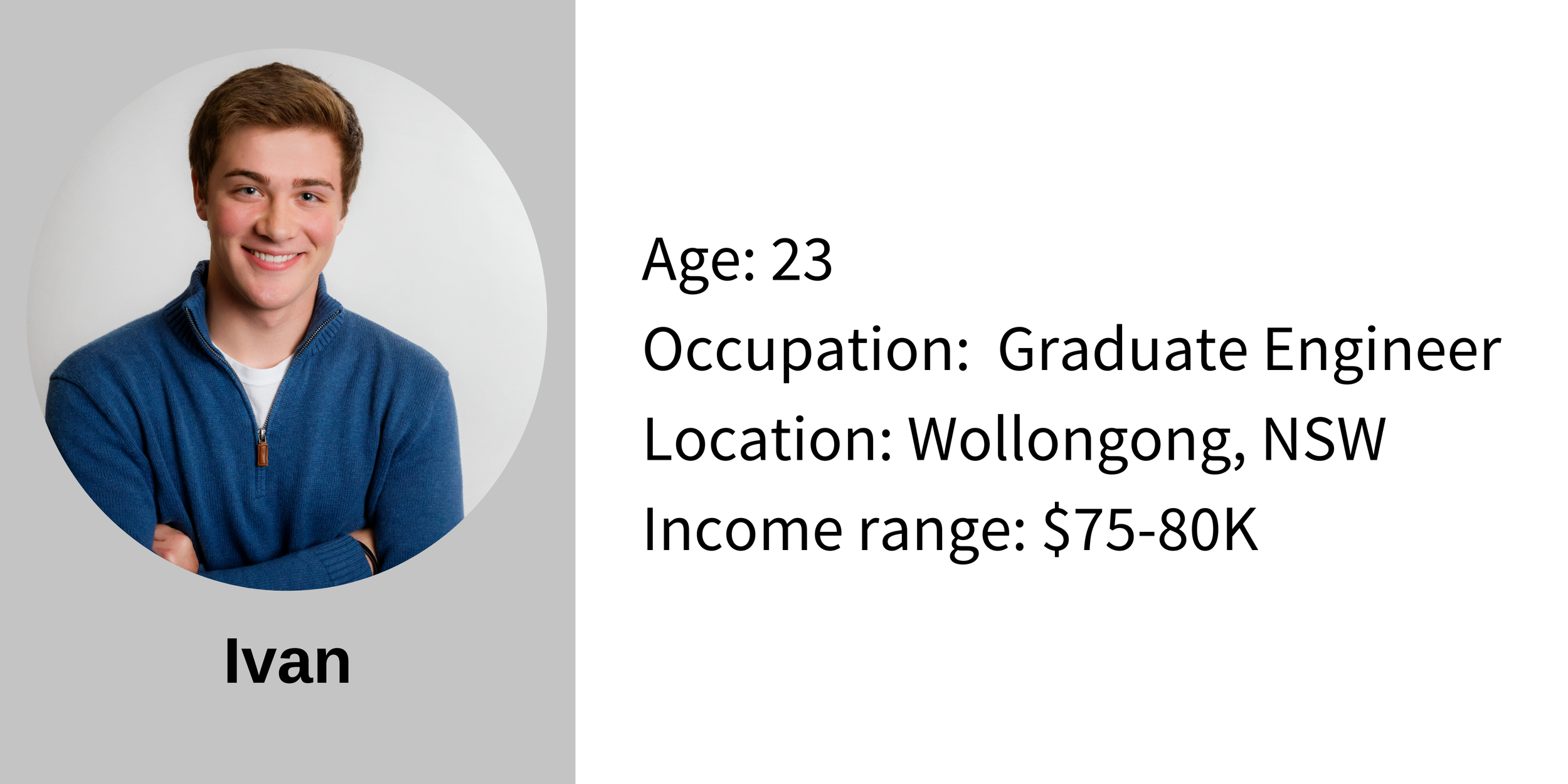
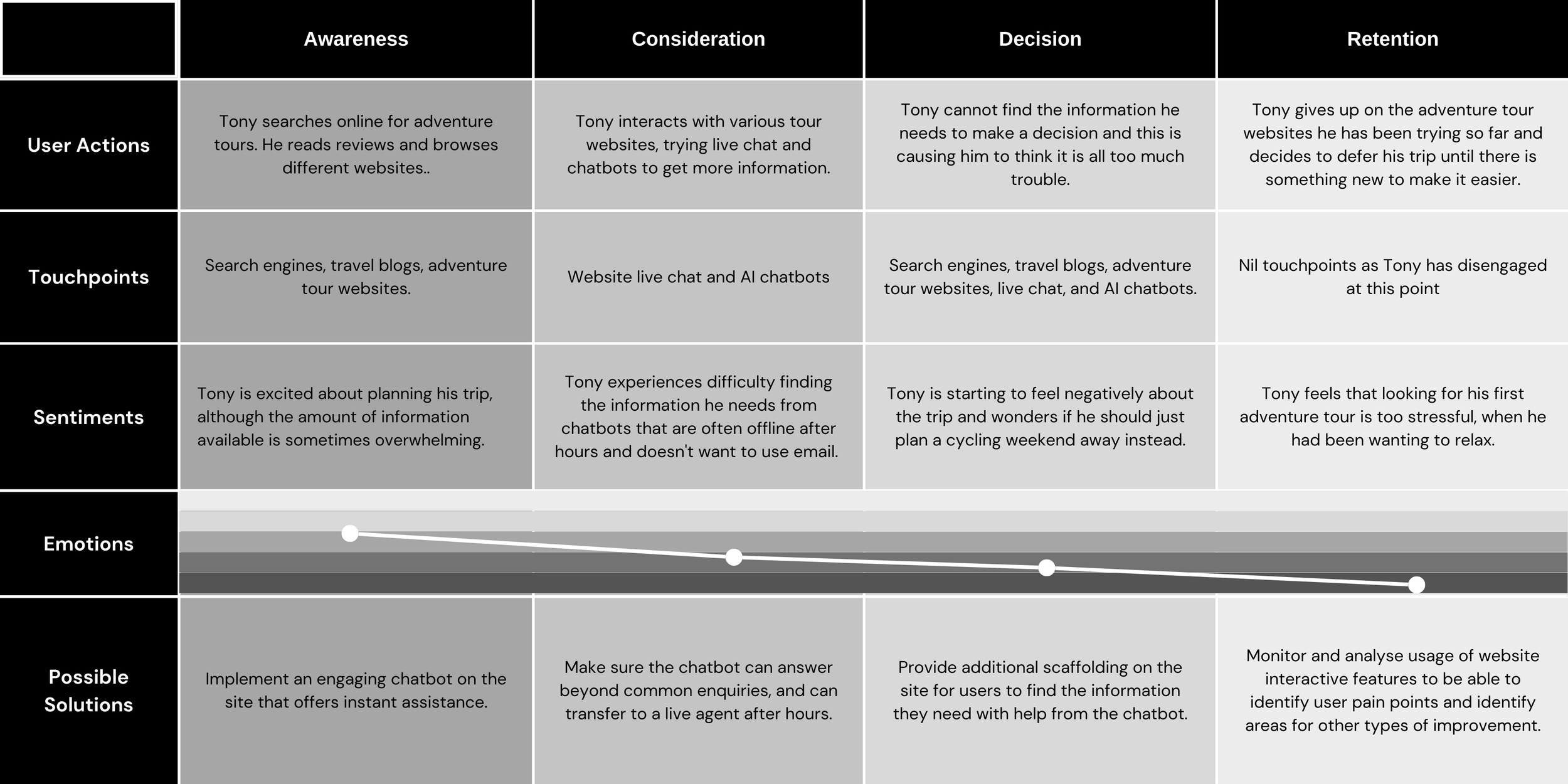


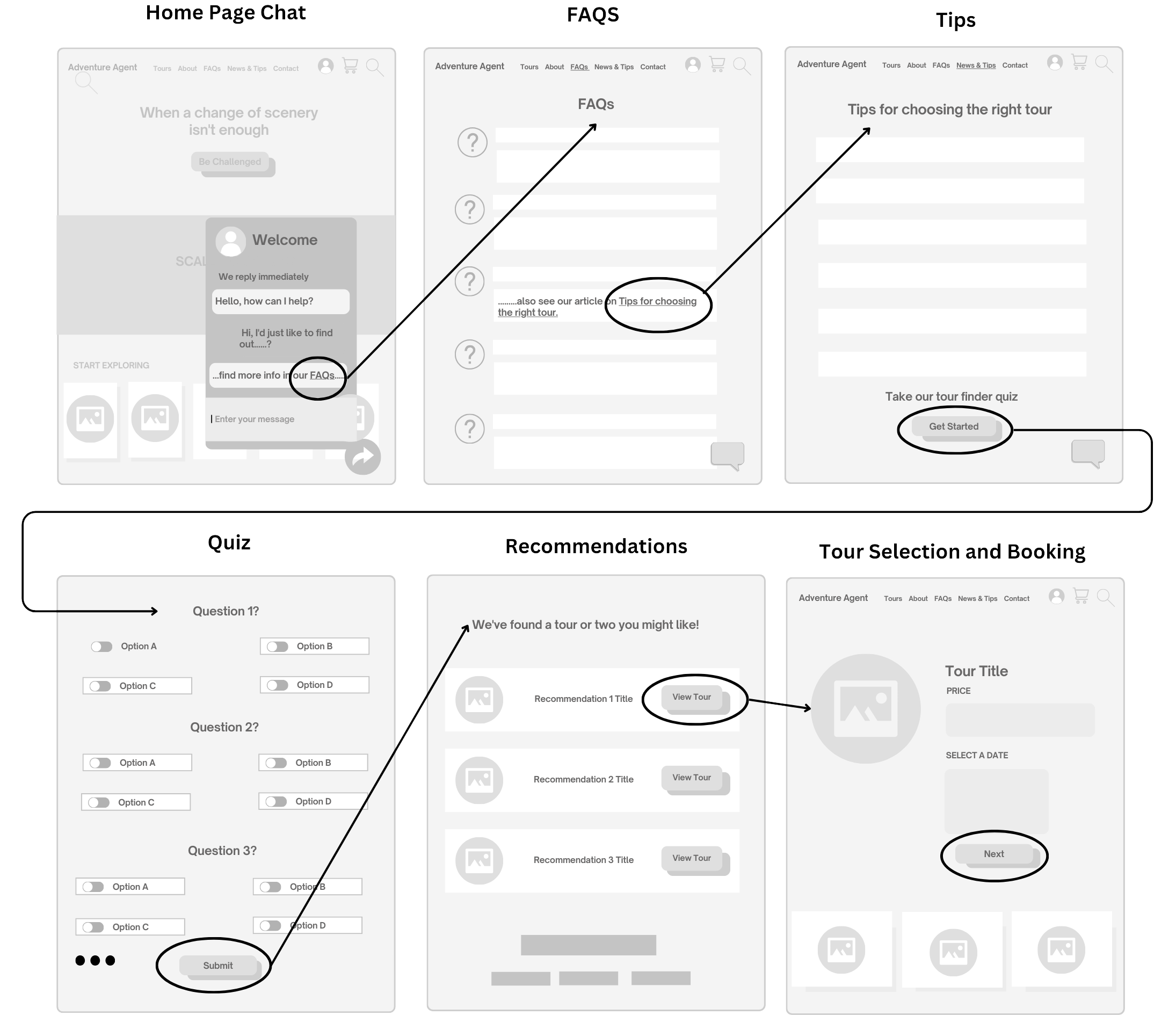
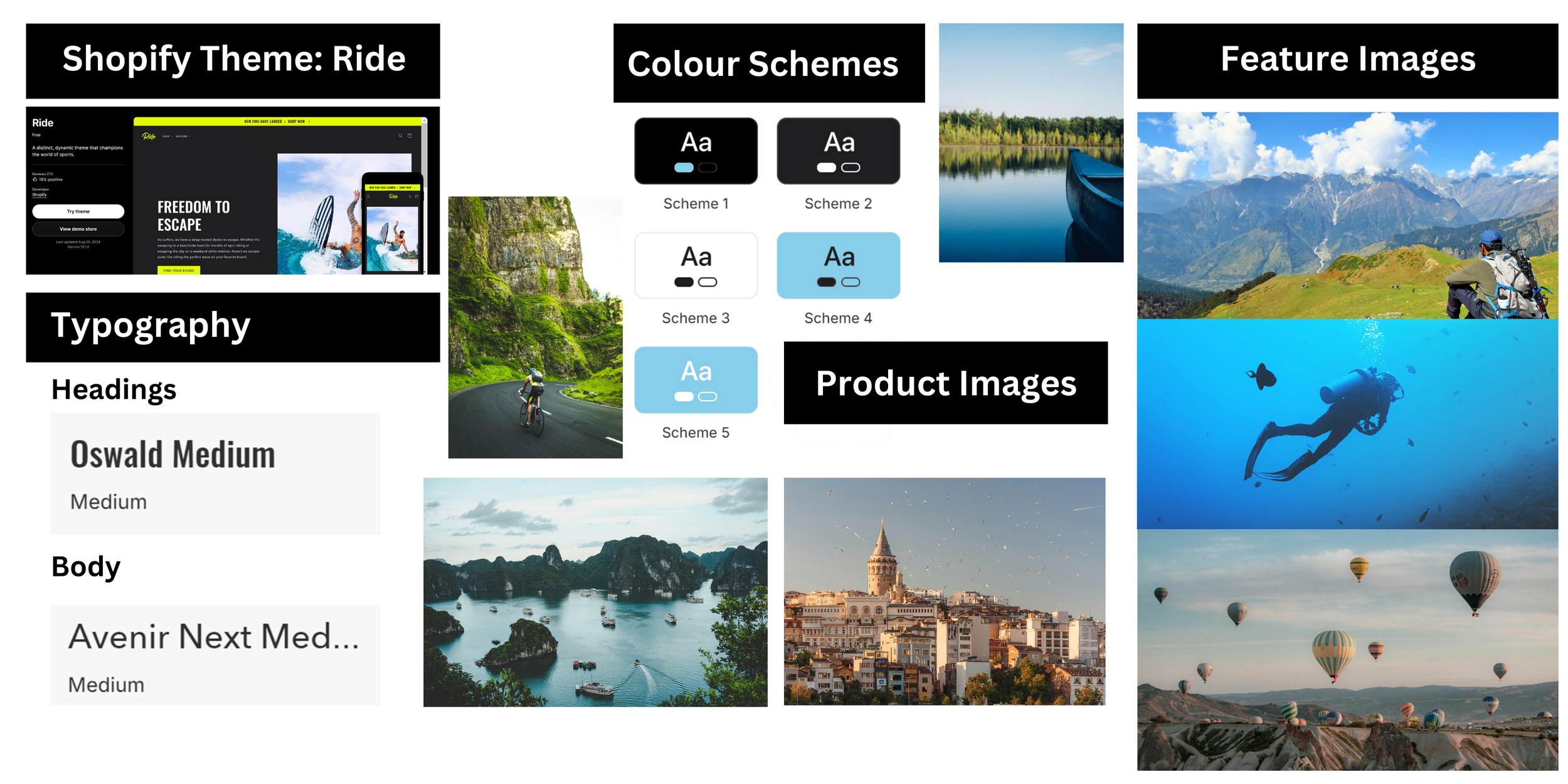
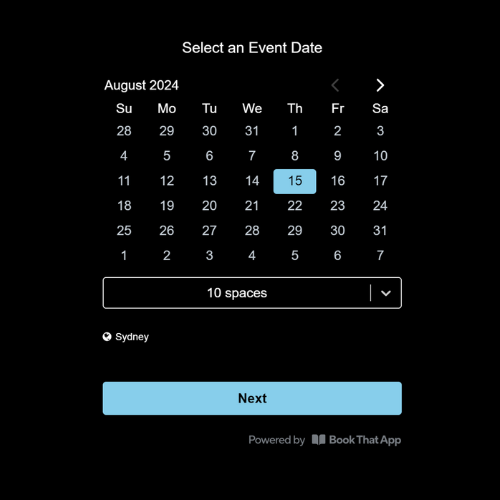
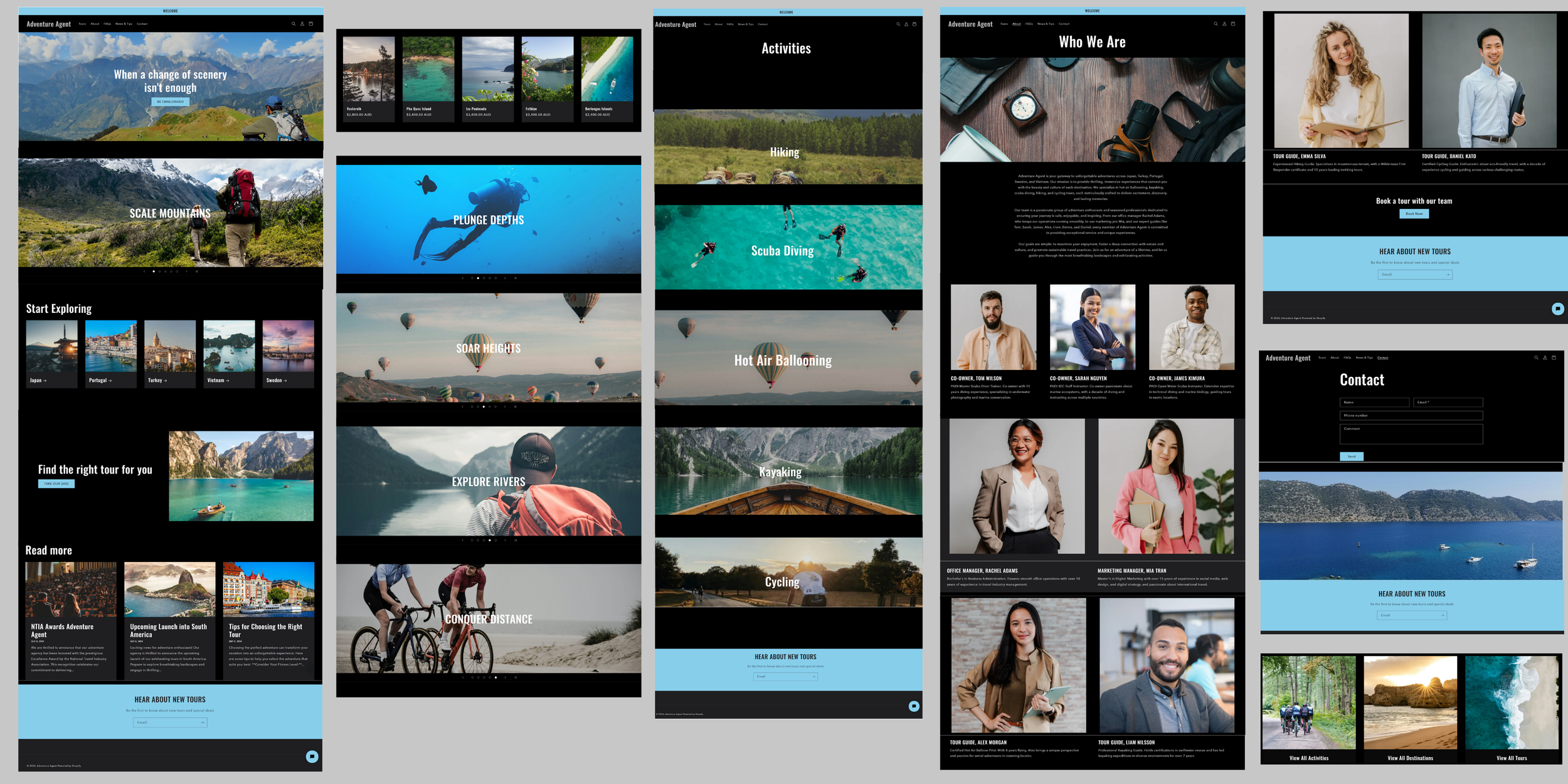
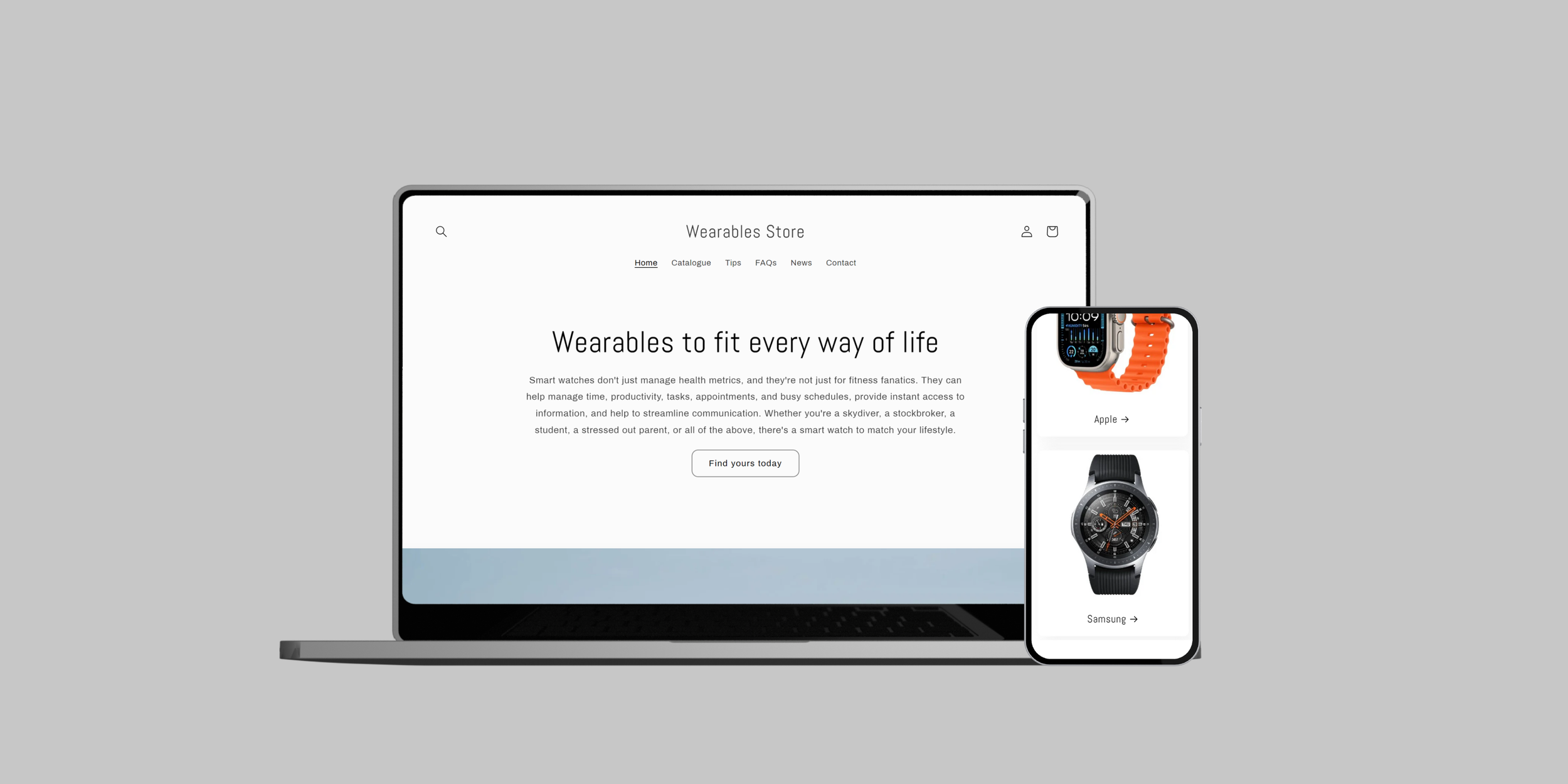
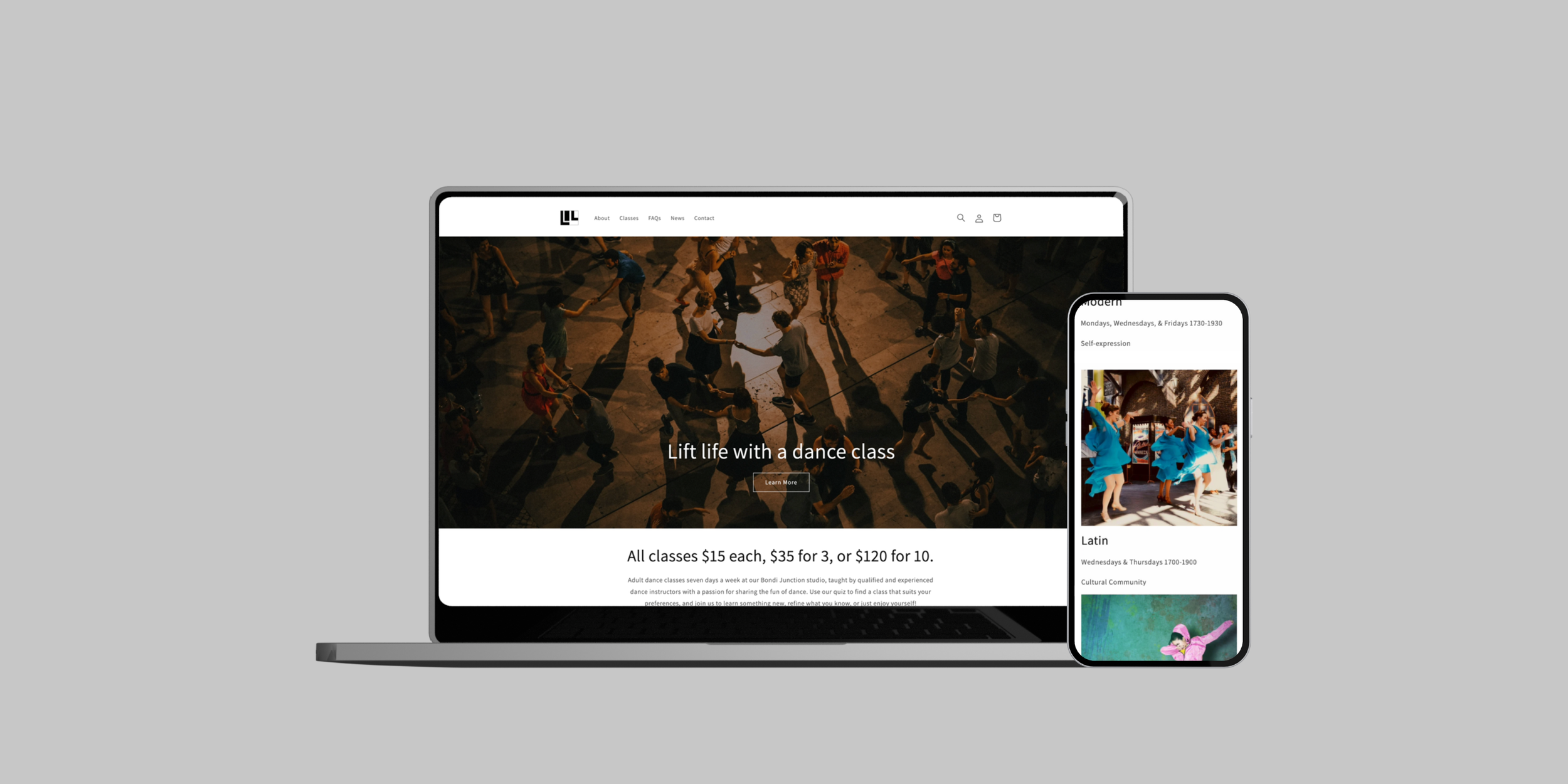
Facebook Ad
Instagram Ad
LinkedIn Ad
Back to top ^